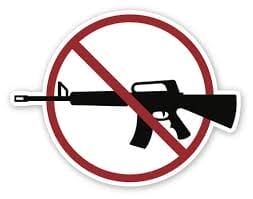by Jason Tarnow | Jan 19, 2024 | Crime, Legal Rights, Media, Police, Wheels Of Justice
How would you feel if your DNA was used to convict a family member?
Last week, news consumers were divided on the use of this tactic to identify and arrest Ibrahim Ali who was recently convicted of the murder and sexual assault of a 13 year old victim in 2017 in Burnaby.
Investigators went undercover at a 2018 Kurdish New Year Celebration handing out samples of tea in hopes of collecting DNA from their suspect – and it worked. Police were able to obtain a sample from a relative of the suspect. The sample was analyzed and compared against the DNA sample collected from semen found inside the victim, and the results were conclusive: the sample collected at the Kurdish New Year Celebration belonged to the brother of the whomever’s DNA was found inside the victim. This critical development resulted in the positive identification of Ibrahim Ali, his subsequent arrest and ultimately, his conviction.

However, certain civil liberties advocates have decried this investigative strategy, claiming it infringes on the privacy rights of people who have their DNA seized when they themselves are not suspected of any wrongdoing. Further, genealogical DNA testing is not frequently accessed or available technology in Canada. As a result, the analysis is often done in the United States, further stoking concerns from privacy experts. Police are required to maintain a “chain of custody” for all exhibits in a case. When the exhibits are forensic material, it is especially important that the chain of custody be meticulously maintained. This becomes increasingly difficult when exhibits leave the custody of Canadian agencies. Further, labs in the United States (and beyond) may not be accredited to the same standard as a Canadian lab. And of course, when private and sensitive material exists in the database of outside agencies, there is always a security risk.
Genealogical DNA testing and its use in criminal law is still very much in its infancy – in Canada, anyways.
This investigational technique gained notoriety in 2018 when it was used to identify and convict the Golden State killer in California, and made headlines again in December 2022 when it was used to identify Bryan Kohberger, currently awaiting trial for the murder of four college students at the University of Idaho.
Canadian Courts and legislators are no doubt paying close attention to developments in the field of Genealogical DNA testing. It is more important now than ever – in the age of ever-advancing scientific exploration and sophisticated tools like AI – that the Courts, and the law, can maintain pace.
by Jason Tarnow | Jun 29, 2022 | Crime, Media, Politics
In May of 2022, the Supreme Court of Canada determined that stacking parole ineligibility for multiple murders is unconstitutional under Canadian law.
In 2011, Stephen Harper’s government passed legislation relating to sentencing provisions in the Criminal Code that would allow Judges to impose parole ineligibility far beyond the minimum of 25 years on the offence of First Degree Murder, pursuant to Section 745.51.
Since that time, several sentences have been passed in imposing parole ineligibility, with the most lengthy sentence being no parole eligibility for 75 years in the case of Douglas Garland, who was found guilty of murdering two adults and their grandson. Garland appealed his sentence to the Alberta Court of Appeal, where it was upheld.
It was the case of the Quebec mosque shooter, Alexandre Bissonnette, that resulted in a unanimous decision from all nine Supreme Court Justices to rule that the sentencing provision violated Section 12 of the Canadian Charter of Rights and Freedoms, granting protection against cruel and unusual punishment. Bissonnette pleaded guilty to 6 counts of First Degree murder and six counts of attempted murder, and the Crown had asked for a parole ineligibility period of 150 years – 25 consecutive years for each of the six people he murdered – which would have been the harshest sentence handed down in Canada since the abolishment of capital punishment. The presiding Judge declined, and instead sentence Bissonnette to 40 years before he could apply for Parole. Criminal defence counsel appealed to the Quebec Court of Appeal in 2020, and the sentence was reduced to 25 years. The Crown then appealed to the Supreme Court of Canada, which led to the landmark decision to cap parole ineligibility at 25 years.

With this decision, those incarcerated under the stacked ineligibility provision are seeking to have their sentences reduced, which has caused a great deal of alarm to the public. It is important to remember that someone convicted of first degree murder will have eligibility at Parole after 25 years – but that does not guarantee their release by any means. The Parole Board looks at many factors when determining whether or not to grant Parole, including the actual offence itself, criminal and social history, rehabilitation efforts, and remorse. Their review of an individuals history when considering release is thorough and rigid. Victim impact statements from family members and loved ones are also taken into consideration.
The decision from the SCC included the following passage:
“This appeal is not about the value of each human life, but rather about the limits of the state’s power to punish offenders.”
This is a reminder that the Court’s decision to limit parole ineligibility is not meant to diminish loss of life, or to favour offenders. It reaffirms that our government, including judicial institutions, must abide by limits to ensure that Canada remains a fair and just society for all.
If you have been charged with a criminal offence in British Columbia (including, but not limited to: Richmond, Vancouver, Surrey, Delta, Langley, Coquitlam, New Westminster, Abbotsford, Victoria, Nanaimo, Kamloops, Kelowna) or the Yukon Territory (including but not limited to: Whitehorse, Dawson City, Watson Lake, Haines Junction, Mayo, Old Crow) contact experienced counsel at Tarnow Criminal Law without delay.

by Jason Tarnow | Apr 1, 2022 | Crime, Criminal Attorney
Systemic racism is alive and well in the Canadian judicial system. A refreshed approach to sentencing is long over due.

Bill C-5 seeks to do just that – by repealing Mandatory Minimum Penalties (“MMP”) for 14 offences in the Criminal Code, and all six MMP’s in the Controlled Drug and Substances Act. Statistics demonstrate that MMP’s disproportionately effect Canadians of color – specifically, Indigenous and Black Canadians.
Two important factors to consider:
Overincarceration rates
Data on this issue was collected by the Government of Canada for the periods of 2007-2008 and 2016-2017. The information compiled desmonsrates that Indigenous and Black offenders were most likely to be admitted to the Federal correctional system for an offence attached to a mandatory minimum sentence.
Judicial discretion in sentencing
Mandatory minimum penalties eliminate a Judge’s ability to sentence an offender while considering their unique circumstances. In cases where a mandatory minimum punishment is the best an Accused can hope for, there is little reason for the Accused to make any meaningful effort to mitigate the damage. When a custodial sentence is imminent, the feeling of having “nothing left to lose” can take over. Any incentive for an Accused to plead guilty to an offence carrying an MMP, when their efforts for rehabilitation have no influence on the Judge’s ability to impose a just and fair sentence.

Reforms to the MMP provisions of the Criminal Code and CDSA are specific to the following offences:
Criminal Code:
1. Using a firearm or imitation firearm in commission of offence (two separate offences)
2. Possession of firearm or weapon knowing its possession is unauthorized (two separate offences)
3. Possession of prohibited or restricted firearm with ammunition
4. Possession of weapon obtained by commission of offence
5. Weapons trafficking (excluding firearms and ammunition)
6. Possession for purpose of weapons trafficking (excluding firearms and ammunition)
7. Importing or exporting knowing it is unauthorized
8. Discharging firearm with intent
9. Discharging firearm — recklessness
10. Robbery with a firearm
11. Extortion with a firearm
12. Selling, etc., of tobacco products and raw leaf tobacco
Controlled Drugs and Substances Act:
1. Trafficking or possession for the purpose of trafficking (two separate offences)
2. Importing and exporting or possession for the purpose of exporting (two separate offences)
3. Production of substance Schedule I or II (two offence)
Mandatory Minimum Punishments will remain in effect within the Criminal Code for other offences to which MMP’s apply.
It is important to note that the Judge can still impose a period of incarceration for any of the offences mentioned above – they simply will no longer be bound by legislation to impose a specific period of jail.
As we’ve seen with other aspects of Canadian criminal law, a “one size fits all” approach is rarely just. Sadly, these legislative amendments will do nothing to address the current rate of overincarceration of Indigenous and Black Canadians. For them, it is too little, too late.
If you have been charged with a criminal offence, it is important that you speak to experienced defence counsel without delay. Our office skillfully handles both summary and indictable offences, ranging from assault, mischief, criminal harassment and impaired driving, to sexual assault, murder, robbery, unlawful confinement, and everything in between. We are licensed to practice in British Columbia, and work in the Lower Mainland and Greater Vancouver Area including, but not limited to Richmond, Vancouver, Surrey, Ladner, Burnaby, Port Coquitlam, New Westminster and Langley, and in the Fraser Valley, including, but not limited to Abbotsford , Chilliwack, Hope, Mission and Agassiz. We are also licensed to practice in the Yukon Territory and frequently accept clients in Whitehorse, Dawson City, Old Crow, Mayo, Haines Junction, and Faro.
by Jason Tarnow | Feb 24, 2022 | Crime, Media, Police
A Vancouver man suffering from long haul COVID-19 symptoms was successful in the judicial review of his 90-day Immediate Roadside Prohibition (“IRP”) after arguing that the Adjudicator breached his right to procedural fairness in his original review to RoadSafety BC.
On February 11, 2021, Peter Ronald Gibson was issued an IRP after the police officer alleged he refused to provide a sample. Mr. Gibson made 7 attempts into the Approved Screening Device, none of which successfully yielded a suitable sample. As a result, his vehicle was impounded for 30 days, and he was prohibited from driving for 90 days.
Mr. Gibson sought a review of his IRP to RoadSafety BC, delegate of the Superintendent of Motor Vehicles on the basis that he had a reasonable excuse for failing to provide a breath sample. In Mr. Gibson’s original review, he provided evidence in the form of his Affidavit. He also provided a letter from his physician that confirmed his diagnosis – he was suffering from long term symptoms as a result of COVID-19, including shortness of breath on exertion.
The letter reads:
“His physical examination shows evidence of post-viral reactive airways with sever forced expiratory wheeze. He has been given prescriptions for Flovent and Salbutamol inhalers today. This could contribute to his difficulty performing breathalyzer test during recent traffic stop”
The Adjudicator at RoadSafety BC rejected the letter from Mr. Gibson’s physician, stating that there was no evidence that the physician was aware of the “minimum flow rate (of breath)” required to provide a sample. Mr. Gibson also provided his own Affidavit, which confirmed that he had been referred for treatment, which included CT scans and chest x-rays, among other diagnostic tests.

Keep in mind that the role of the Adjudicator is to analyze whether Mr. Gibson had a reasonable excuse for failing to provide a sample. The analysis is done through review of the Report to Superintendent and all included materials, and also through review of all materials provided by the Applicant (in this case, Mr. Gibson). The Adjudicator may also rely on the Operator’s manual for the Alco-Sensor FST (the Approved Screening Device), which includes information such as proper operating temperature of the device, screen codes, and procedural standards.
Ultimately, the Adjudicator determined that Mr. Gibson’s version of events lacked credibility, and that his physician did not provide sufficient evidence that his medical condition would have prevented him from providing a suitable sample into the Alco-Sensor FST. In doing so, they advanced their interpretation of the testing requirements within the Operator’s manual – specifically, the wording used to describe the necessary airflow required to provide a sample:
“The Alco-Sensor FST has an automatic sampling system designed to ensure that a sample of deep lung air is obtained and analyzed. In order to trigger automatic sampling the subject must blow with a minimum flow rate, must produce a minimum breath volume, and blow for a minimum duration…”
On judicial review, Supreme Court Justice Tammen took issue with the Adjudicator’s interpretation of this issue. The Judge dissected the Adjudicator’s analysis and concluded that despite quoting the appropriate resource, the manual itself provided no information to estimate the “minimum” flow rate required.
Through the Adjudicator’s analysis, Justice Tammen determined that they had relied on information (relating to the required flow rate of a sample) that was not available to the Petitioner (or his physician) at the outset of his review with RoadSafety BC. This breached the Petitioner’s right to procedural fairness.
Justice Tammen directed that the Adjudicator’s decision confirming the IRP of the Petitioner be set aside, and that the matter be remitted to RoadSafety BC for a new hearing.
This case demonstrates a significant flaw in the IRP regime – that is, a blurring of the lines between adjudication and medical expertise. While adjudicators may have specialized knowledge of certain issues due to continued exposure via their employment, the boundaries in their role must be respected and enforced.

If you have received an Immediate Roadside Prohibition, an Administrative Driving Prohibition, or have been charged with Impaired Operation of a Conveyance, contact an experienced criminal lawyer at Tarnow Criminal Law as soon as possible. Our office is located in the heart of Richmond, only 20 minutes from downtown Vancouver on the Canada Line, and within 10 minutes of Vancouver International Airport (“YVR”).
Our firm is also licensed to work in the Yukon Territory, where the 90-day review process for impaired driving is an entirely different process. If you are facing impaired driving charges in the Yukon, contact our office as soon as possible for a consultation.
by Jason Tarnow | Feb 23, 2021 | Crime, Legal Rights, Police, Politics, Wheels Of Justice
On May 1, 2020, Prime Minister Justin Trudeau issued an Order in Council immediately banning the use, sale and transport of approximately 1,500 “assault” style firearms. This action was met with criticism from firearm owners, retailers and pro-gun advocates from across the country. A two-year amnesty period for restricted firearm owners will expire on April 30, 2022, which is around the time when Bill C-21 could come into effect.
At its first reading in the House of Commons on February 16, 2021, details about Bill C-21 emerged that created further frustration and confusion among Canadian firearm owners and retailers. Described as “an Act to amend certain Acts and to make consequential amendments (firearms)”, Bill C-21 will make substantive changes to both the Criminal Code and the Firearms Act, both of which are Federal legislation, thus impacting Canadians from coast to coast. It will also amend the Immigration and Refugee Act and the Nuclear Safety and Control Act.

Proposed amendments to the Criminal Code include:
- Increasing the maximum penalty of imprisonment for offences under Sections 95, 96, 99, 100 and 103 of the Criminal Code from 10 years to 14 years;
- Establishing a procedure that would allow any person to apply for an emergency prohibition order, or an emergency limitations on access order;
- Deem certain firearms to be prohibited devices for certain provisions;
- Create a new offence for altering a cartridge magazine to exceed its lawful capacity;
- Authorize employees of certain federal entities who are responsible for security to be considered as public officers for the purpose of section 117.07
One of the most concerning amendments, and the focus of today’s blog, involves establishing a procedure that would allow for any person to apply for an emergency prohibition order, or an emergency limitations on access order. The proposed amendment reads as follows:
Application for emergency prohibition order
110.1 (1) Any person may make an ex parte application to a provincial court judge for an order prohibiting another person from possessing any firearm, cross-bow, prohibited weapon, restricted weapon, prohibited device, ammunition, prohibited ammunition or explosive substance, or all such things, if the person believes on reasonable grounds that it is not desirable in the interests of the safety of the person against whom the order is sought or of any other person that the person against whom the order is sought should possess any such thing.
An ex parte application does not require notice to be given to the adverse party. This means that any person can make an application to a judge seeking the immediate prohibition (and subsequent seizure) of any of the items described in section 110.1(1). Success on the application is discussed next:
Emergency prohibition order
(2) If, at the conclusion of a hearing of an application made under subsection (1), the provincial court judge is satisfied that the circumstances referred to in that subsection exist and that an order should be made without delay to ensure the immediate protection of any person, the judge shall make an order prohibiting the person against whom the order is sought from possessing any firearm, cross-bow, prohibited weapon, restricted weapon, prohibited device, ammunition, prohibited ammunition or explosive substance, or all such things, for a period not exceeding 30 days, as is specified in the order, beginning on the day on which the order is made.
The seizure process will unfold one of two ways:
Warrant to search and seize
(4) If a provincial court judge is satisfied by information on oath that there are reasonable grounds to believe that a person who is subject to an order made under subsection (2) possesses, in a building, receptacle or place, any thing the possession of which is prohibited by the order, and that it is not desirable in the interests of the safety of the person, or of any other person, for the person to possess the thing, the judge may issue a warrant authorizing a peace officer to search the building, receptacle or place and seize any such thing, and every authorization, licence or registration certificate relating to any such thing, that is held by or in the possession of the person.
OR:
Search and seizure without warrant
(5) If, in respect of a person who is subject to an order made under subsection (2), a peace officer is satisfied that there are reasonable grounds to believe that it is not desirable, in the interests of the safety of the person, or of any other person, for the person to possess any thing the possession of which is prohibited by the order, the peace officer may, where the grounds for obtaining a warrant under subsection (4) exist but, by reason of a possible danger to the safety of the person or any other person, it would not be practicable to obtain a warrant, search for and seize any such thing, and any authorization, licence or registration certificate relating to any such thing, that is held by or in the possession of the person.
The seized items will remain in police custody for 30 days. When the Order expires, the seizing agency (police) must make an application for a Prohibition Order under Section 111(1) of the Criminal Code. This Application requires that the subject of the Order (the firearms/weapons owner) be given notice of the application, and the opportunity to respond in court. At this juncture, there are three ways the seized items can be returned to their owner:
- No application is made for a Prohibition Order under Section 111(1);
- If the hearing does not result in a Prohibition Order being made under Section 111(5);
- If the Order issued at the ex parte application is revoked
While this legislation seeks to establish an alternative procedure that gives the public power to seek protection from violence involving firearms and other weapons, it fails to address the possibility that this power could be abused. Currently, the law requires that an individual report their concerns to the police, who would then engage in an investigation to determine whether a seizure is necessary. When citizens assume this authority, there are a myriad of complications that could pose negative consequences not only to the potential subject of the Order, but to whomever makes the ex parte application. It requires that they take the law into their own hands – something that law enforcement regularly counsels against.
Bill C-21 is still in the early stages of the legislative process, but has garnered both support and criticism from those it will protect, and those it will harm.







